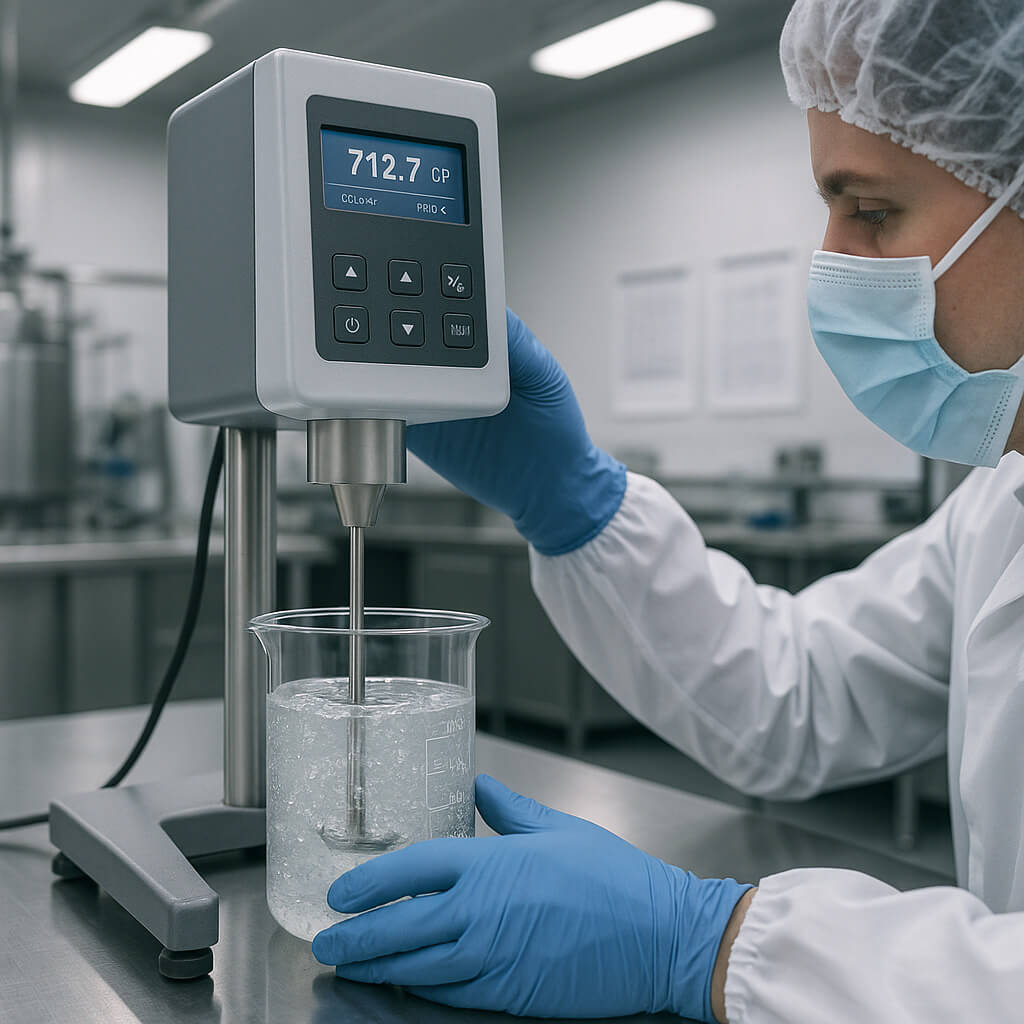Hydroxypropyl Methylcellulose, commonly referred to as HPMC, is a cellulose ether that has gained significant traction in a variety of industries, including construction, pharmaceuticals, and food processing. The phrase “What Are Your Favorite HPMC Grades and Their Uses?” points to an essential inquiry that many decision-makers in B2B spaces grapple with. Understanding the different grades of HPMC and their applications is not just beneficial; it can significantly impact product quality and operational efficiency. This article aims to provide an in-depth exploration of HPMC grades, their uses, and why they matter to you and your business.

WHAT ARE HPMC GRADES?
First things first, let’s clarify what HPMC grades actually entail. HPMC grades are classified based on their viscosity, chemical composition, and intended application. The primary distinction among these grades lies in their gelling and thickening properties, which are used differently across various sectors.
But here’s the kicker: the specifications that differentiate HPMC grades play a crucial role in their functionality. For instance, high-viscosity grades are typically utilized in applications that require strong thickening agents, such as in the formulation of paints and coatings. Conversely, low-viscosity grades are more suitable for applications like liquid pharmaceuticals where smooth flow is essential.
In terms of grade specifications, manufacturers often categorize HPMC into three main groups based on viscosity levels: low, medium, and high viscosity grades. Each of these has unique physical and chemical characteristics that can significantly influence the end product’s quality.
Why is this important? When choosing HPMC, understanding its grade can drive better decision-making regarding materials, processes, and product outcomes. For instance, ensuring the correct grade contributes to the effectiveness of adhesives used in construction or the bioavailability of medications in the pharmaceutical sector.
| Сорт ГПМЦ | Viscosity (cP) | Primary Use |
|---|---|---|
| Низкий | < 100 | Liquid pharmaceuticals |
| Середина | 100 – 500 | Food thickeners and stabilizers |
| Высокий | > 500 | Construction adhesives |
Understanding HPMC grades is a foundational step toward optimizing their applications in your business.
WHY SHOULD YOU CHOOSE HPMC?
Now, let’s dive into the advantages of choosing HPMC for your industrial needs. What’s the real story? The properties that make HPMC highly effective in various applications are extensive and include its water retention ability, gel-forming characteristics, and exceptional film-forming capability.
One of the standout features of HPMC is its thermal stability. This means it can maintain its performance characteristics even when exposed to high temperatures, making it invaluable in manufacturing processes that involve heat. For example, in the construction industry, HPMC improves the workability of mortars, ensuring they remain pliable and easy to apply, even under demanding conditions.
Moreover, HPMC is non-toxic and derived from natural plant sources, making it a safer alternative compared to synthetic alternatives. This is critically important in industries like food and pharmaceuticals, where contamination can have severe implications.
For instance, in the pharmaceutical realm, robust HPMC grades facilitate drug release profiles that enhance bioavailability and therapeutic effectiveness. In food products, HPMC acts as a stabilizer and emulsifier, improving overall texture and shelf-life.
| Свойство | Влияние |
|---|---|
| Удержание воды | Enhances cohesion and reduces cracking |
| Образование геля | Provides thickening and stabilizing effects |
| Термическая стабильность | Maintains consistency under heat |
| Нетоксичность | Safe for food and drug applications |
Choosing HPMC is an informed decision that can yield long-term benefits across various applications, not just immediate gains.
WHAT ARE THE MAIN APPLICATIONS OF HPMC?
Alright, let’s get into the meat of it: what are the specific applications for HPMC?
Ready for the good part? HPMC is a versatile ingredient used across numerous sectors. In the construction industry, HPMC is predominantly used in tile adhesives, cement-based formulations, and other building materials. Its ability to improve adhesion and workability makes it a go-to additive for many construction projects.
In pharmaceuticals, HPMC serves a dual purpose: it acts as a binder in tablet formulations and as a coating agent for controlled-release drugs. By modifying the release rate, HPMC helps in enhancing the drug’s effectiveness and patient compliance.
Then there is the food industry. HPMC is commonly utilized as a thickening agent and emulsifier in a range of products, from sauces to ice creams. Its exceptional stabilizing properties ensure that the final products maintain consistency and quality over time.
What you may not know is that HPMC also finds applications in cosmetics and personal care products. Its film-forming ability provides a desirable texture in lotions, creams, and hair styling products.
| Промышленность | Приложение | Функция |
|---|---|---|
| Строительство | Tile adhesives, mortars | Improves adhesion and workability |
| Фармацевтика | Tablet binders, controlled-release agents | Enhances drug release profiles |
| Еда | Thickening agents, emulsifiers | Улучшает текстуру и стабильность |
| Косметика | Lotions, hair products | Provides desirable texture and stability |
Recognizing these applications can significantly influence your choices in material selection and product formulation.
HOW DO DIFFERENT HPMC GRADES AFFECT PERFORMANCE?
You might be wondering, how exactly do different HPMC grades impact performance? This is where it gets interesting!
Different HPMC grades possess varying viscosities, which can greatly alter their effectiveness in specific applications. Let’s break this down:
High-viscosity grades are typically used in adhesives and sealants, where a thicker consistency is required for optimal adhesion and durability. Products created with high-viscosity HPMC show enhanced protection against water and other environmental factors.
In contrast, low-viscosity grades are ideal for applications needing a smooth flow, such as in pharmaceutical liquids or food products where a thinner consistency is more favorable. This makes it easier to mix ingredients and ensures a more homogeneous product.
What does this mean for businesses? Understanding the specific grade required for your application can prevent costly mistakes and improve product quality. Choosing the wrong viscosity can result in subpar performance, leading to customer dissatisfaction and potential loss of business.
| Класс вязкости | Типичное использование | Performance Benefit |
|---|---|---|
| Низкий | Liquid pharmaceuticals | Ensures smooth flow |
| Середина | Food stabilizers | Balances thickness and flow |
| Высокий | Construction adhesives | Provides durability and adhesion |
Get it right, and you’re looking at enhanced product performance and longevity.
WHAT FACTORS SHOULD YOU CONSIDER WHEN SELECTING AN HPMC GRADE?
Let’s switch gears a bit. What factors should you consider when selecting an HPMC grade?
First, you’ll want to evaluate your specific application requirements. This includes viscosity level, solubility, and the environmental conditions that the final product will face. For instance, if your application involves high temperatures, you might need a grade that can withstand heat without degrading.
What’s more, the quality of your supplier matters. Look for reputable suppliers who provide comprehensive technical documentation regarding their products. This will not only ensure you receive a quality product but also give you peace of mind regarding its performance capabilities.
Another critical consideration is regulatory compliance. Depending on your industry, HPMC grades must meet various safety and quality standards. Ensure that the grades you choose are compliant with standards set by relevant authorities.
Lastly, take into account the costs versus benefits. Lower-priced HPMC might seem appealing, but it’s essential to weigh that against the potential performance and quality trade-offs. Investing in a slightly more expensive, high-quality HPMC grade can result in better functionality and fewer issues down the road.
| Фактор | Рассмотрение |
|---|---|
| Application Requirements | Viscosity, solubility, environmental conditions |
| Качество поставщика | Technical documentation and support |
| Соблюдение нормативных требований | Alignment with industry standards |
| Cost vs. Benefits | Long-term performance versus immediate cost |
The right selection process can produce dividends in efficiency and product quality.
HOW DOES HPMC CONTRIBUTE TO SUSTAINABILITY?
You may be asking, how does HPMC contribute to sustainability?
Here’s where it gets even more compelling. HPMC is derived from cellulose, a renewable resource, making it an attractive option for businesses looking to enhance sustainability initiatives. Additionally, many HPMC products are biodegradable, meaning they break down naturally without causing long-term environmental harm.
What’s the broader impact? As consumers increasingly demand greener products, businesses that incorporate sustainable ingredients like HPMC are better positioned to meet market needs.
Industries that prioritize sustainability see enhanced brand reputation, customer loyalty, and often, higher profits. For example, companies in the construction sector adopting HPMC-based products are not only reducing their environmental footprint but also appealing to a growing segment of eco-conscious consumers.
Moreover, recent trends show a steady shift towards sustainability in supply chains, impacting manufacturing processes and product formulations. This is something that businesses should pay attention to as sustainable practices may become obligatory rather than optional.
| Аспект | Impact of HPMC on Sustainability |
|---|---|
| Renewability | Source from cellulose, a renewable resource |
| Биоразлагаемость | Breaks down naturally, reducing environmental harm |
| Рыночный спрос | Growing consumer preference for sustainable products |
| Brand Reputation | Enhances company image and consumer trust |
Sustainability isn’t just a buzzword; it’s increasingly becoming a business imperative.
WHAT INNOVATIONS ARE MAKING WAVES IN HPMC PRODUCTION?
What’s new in the world of HPMC?
This is where it gets particularly fascinating! Innovations in HPMC production are having a significant impact on both quality and application. Various research and development efforts are leading to the creation of enhanced formulations that cater to specific industry needs.
For example, some manufacturers are focusing on optimizing the structural properties of HPMC grades, which increases their effectiveness in demanding applications like heavy-duty construction adhesives or specialized pharmaceutical formulations.
Emerging technologies in HPMC manufacturing offer better consistency and purity, essential factors for industries where precision is vital, such as pharmaceuticals and food production.
Moreover, there is a growing trend toward customizing HPMC grades for specific applications. This means businesses can find tailored solutions that meet their precise needs, enhancing overall product quality and performance.
While innovation is crucial, so too is the adaptability of businesses. Keeping up with these advancements can present both opportunities and challenges in the competitive marketplace.
| Инновации | Выгода |
|---|---|
| Optimized Structural Properties | Increased effectiveness in application |
| Improved Purity | Essential for pharmaceuticals & food |
| Customization of Grades | Tailored solutions for specific needs |
Innovation in HPMC is leading to new horizons and unlocking greater potential for businesses.
HOW CAN YOU INTEGRATE HPMC INTO YOUR PRODUCTS?
Let’s shift gears again. How can you integrate HPMC into your products effectively?
First off, it’s fundamental to understand the specific role you want HPMC to play in your formulation. Knowing its properties will guide you in selecting the right grade. Whether you need it for thickening, binding, or stabilizing, having a clear goal will streamline your integration process.
Next, consider conducting small-scale tests to determine how HPMC interacts with other components in your product. Understanding compatibility is crucial to avoid unwanted reactions that could compromise product integrity.
Additionally, creating standardized processes for formulation will ensure consistency in your product quality. Documenting best practices and specific measurements can save time and reduce costs in the long run.
Engage with your supplier for technical support during this integration phase. A knowledgeable supplier can provide valuable insights into optimal usage rates and potential challenges.
| Integration Step | Описание |
|---|---|
| Identify Role | Clarify the purpose of HPMC in your formulation |
| Проведение тестирования | Test for compatibility with other ingredients |
| Standardize Processes | Document best practices and specific measurements |
| Supplier Engagement | Utilize technical support from your HPMC supplier |
Successful integration can pave the way for enhanced product performance and market readiness.
WHERE CAN YOU SOURCE QUALITY HPMC PRODUCTS?
Alright, let’s tackle the long-standing question: where can you source quality HPMC products?
It’s vital to approach supplier selection with diligence. Look for suppliers who have a solid track record and positive reviews in the industry. Quality HPMC is essential for ensuring your product’s efficacy and safety, so diligence in the sourcing process is a must.
What’s more, consider suppliers who provide detailed technical specifications. Transparency is crucial in understanding what you’re buying—especially when it comes to grades and their specific applications.
Furthermore, it’s wise to attend industry trade shows and conferences. This will allow you to meet suppliers face-to-face and get a hands-on feel for their products. Building relationships can lead to better terms and support, enabling you to make more informed sourcing decisions.
Lastly, don’t overlook the importance of customer service. A responsive supplier who is willing to assist with queries and technical issues can be invaluable.
| Sourcing Factor | Рассмотрение |
|---|---|
| Репутация поставщика | Track record and reviews in the industry |
| Технические характеристики | Detailed product information for informed choices |
| Industry Events | Opportunities to meet suppliers and see products firsthand |
| Customer Service | Responsiveness and willingness to assist |
The right suppliers can elevate your product offerings and streamline your processes.
WHAT FUTURE TRENDS SHOULD YOU ANTICIPATE IN HPMC?
As we look forward, what trends are likely to shape the future of HPMC?
The landscape is changing. With increasing demand for sustainable products, HPMC’s renewable nature will likely make it even more popular in various sectors. Companies are more likely to consider HPMC for its environmental benefits, tapping into markets that prioritize sustainability.
Additionally, advancements in research may yield new HPMC grades tailored specifically to niche applications. This could open up pathways for innovations that enhance product performance across distinct industries.
Moreover, the shift toward digital transformation is creating new opportunities for HPMC suppliers. Digital tools can improve supply chain transparency, making it easier for businesses to track the source and quality of their HPMC products.
As market dynamics evolve, it will be vital for decision-makers to remain agile. This agility will allow businesses to adapt to changes in consumer demand while capitalizing on emerging technologies.
| Тенденция | Future Implication |
|---|---|
| Sustainability Focus | Increased demand for renewable products |
| Niche Applications | Customized HPMC grades for specific needs |
| Digital Transformation | Improved supply chain transparency and efficiency |
Being ahead of the curve will ensure you remain a key player in your industry.
The insights contained in this article make it clear that HPMC grades and their respective applications are essential facets of product formulation across various industries. Understanding the nuances of each grade can directly influence product quality and operational efficiency.
By staying informed and engaging with reliable suppliers, businesses can leverage HPMC to drive innovation and sustainability in their offerings.
Раздел часто задаваемых вопросов
В1: Что такое ГПМЦ?
HPMC stands for Hydroxypropyl Methylcellulose, an effective cellulose ether used in numerous industries for its thickening, binding, and film-forming properties.
В2: Как ГПМЦ действует в строительных материалах?
HPMC improves the workability, adhesion, and water retention of construction materials like mortars and adhesives, leading to enhanced performance and durability.
В3: What are the different types of HPMC grades available?
Different HPMC grades vary by viscosity and purity, with options tailored for specific applications in construction, pharmaceuticals, and food industries.
В4: Why is sustainability important in HPMC usage?
Sustainability in HPMC involves reducing environmental impact, as biodegradable options are available, which helps meet regulatory and consumer demand for eco-friendly products.
В5: How can businesses select the best HPMC grade for their needs?
Businesses should consider factors such as viscosity, application requirements, and supplier reputation to choose the most suitable HPMC grade for their specific applications.




